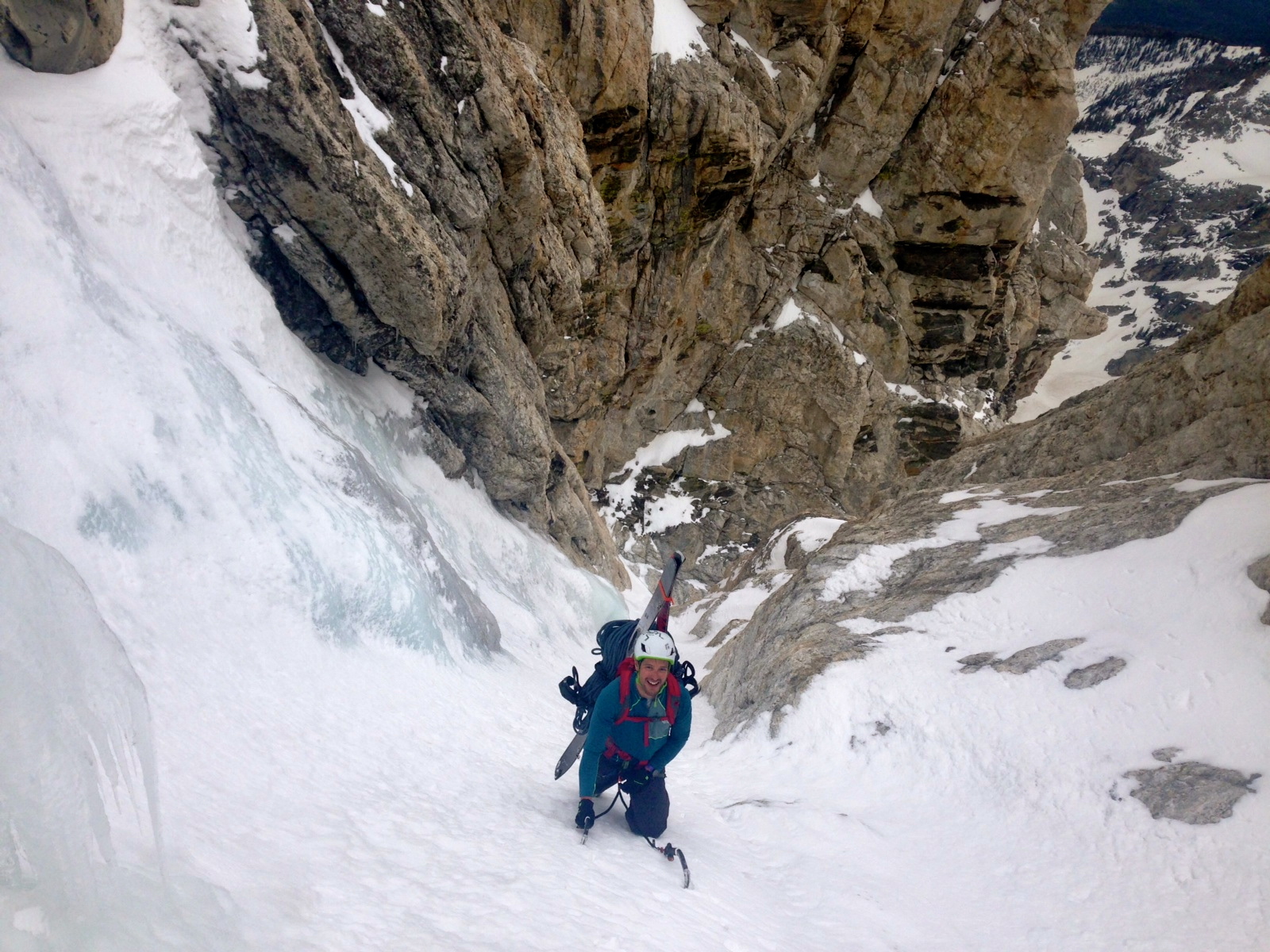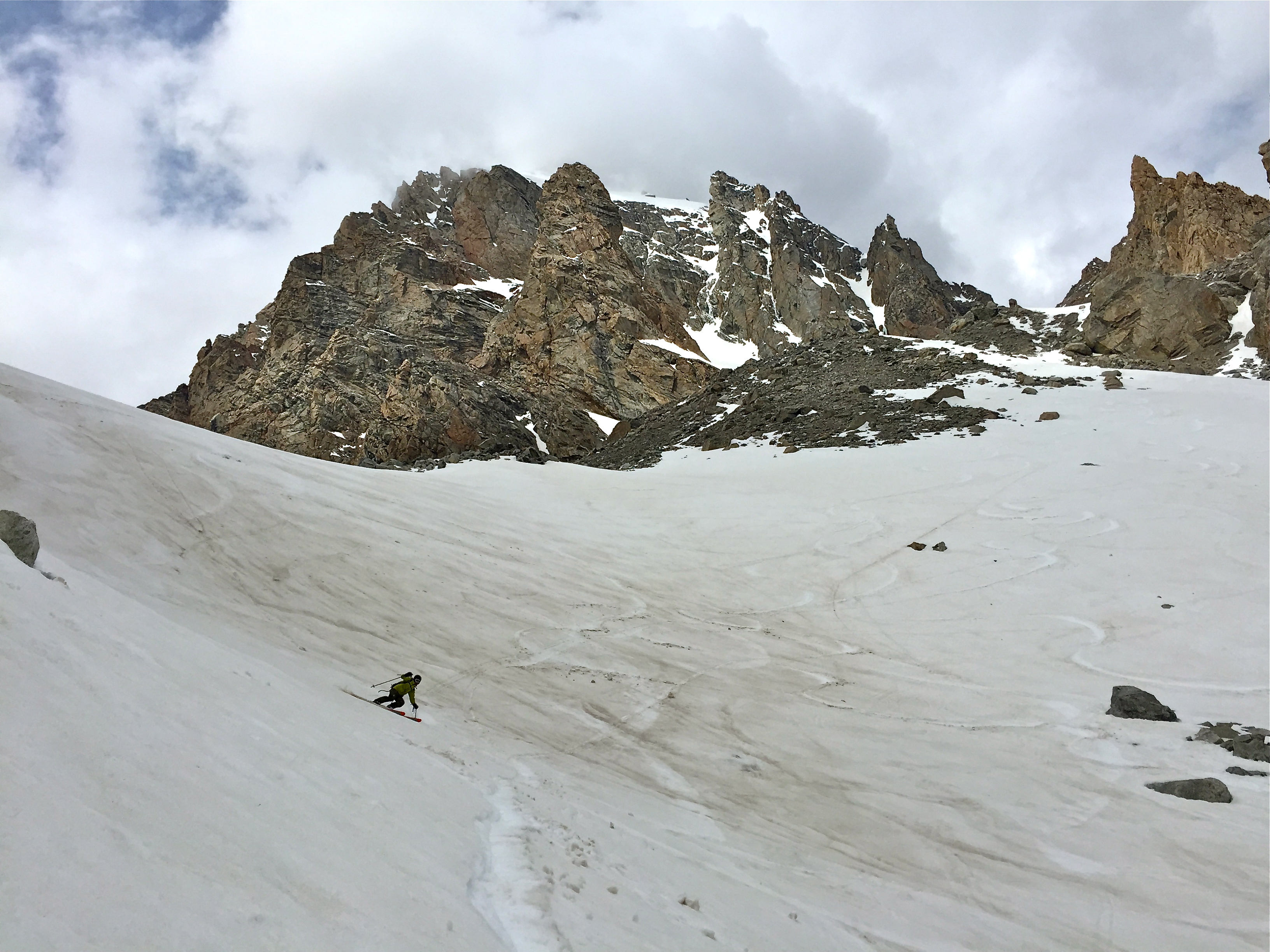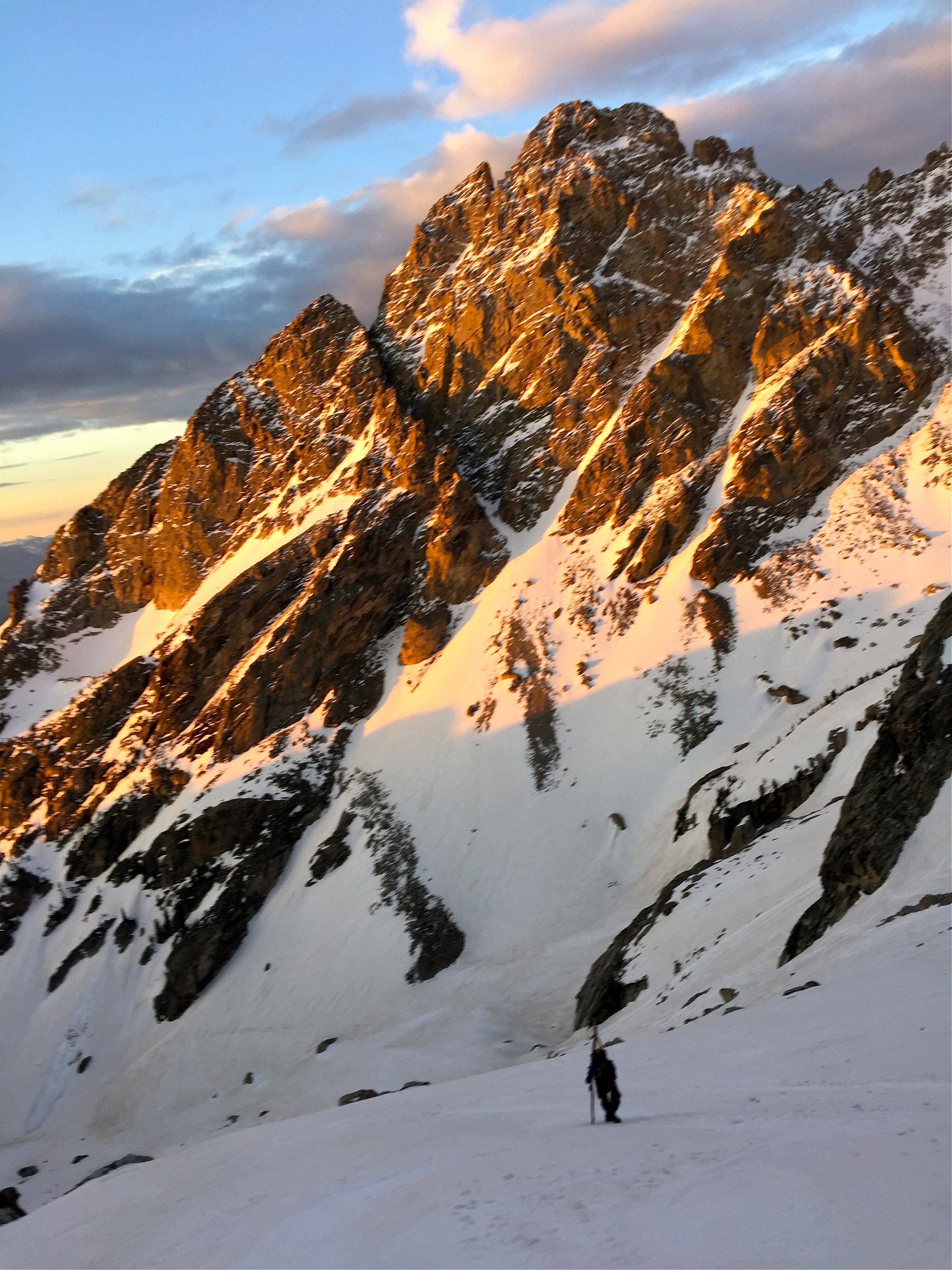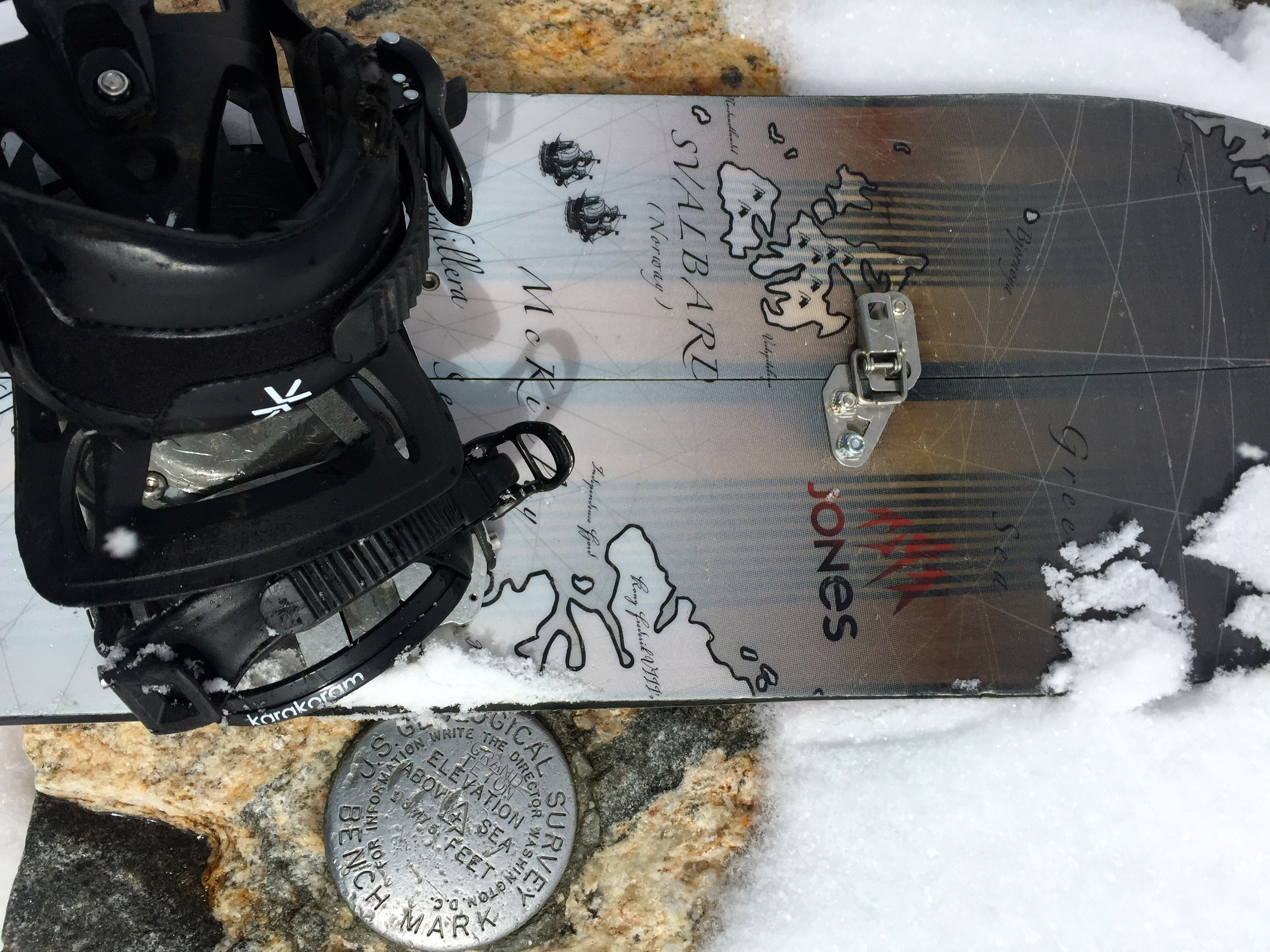By Taylor Luneau
Al-pine start – (adj., noun) – When climbers begin a mountain ascent in the early morning, prior to the first blush of dawn, in order to increase climbing time preceding the effect solar radiation has on snow and ice which may lead to ice or rockfall or potentially avalanches.
Alpine starts are a love-hate relationship. They hold the key to safe and successful mountain travel – yet, in that initial moment of waking before the break of dawn, it takes a minute to remember why you’re awake in the first place. You drive to the trailhead in a dreamlike state, still half asleep, only to be rudely awakened by the crushing weight of your pack. Headlamps are lit and the march is on. Trudging in silence or perhaps cracking a few, “this is crazy” jokes, you find the mileage slipping by quicker and quicker. After a few encounters with the elusive “shadow moose” or “dead-tree-stump bear” your adrenaline pumps and drives you up the mountainside. Finally, a junction, where your mode of travel or direction must change, and we as mountaineers must transition from our drowsy state to one of heightened awareness.
I was skinning under the full moon through the open lower fork of Garnet Canyon when I began to find my heightened conscious state. We had navigated the switchbacks to Garnet Canyon from Lupine Meadows in the Grand Teton National Park and were now quickly working our way towards the open meadows between the peaks of Nez Perce, South and Middle Teton and of course the Grand Teton. Having already covered roughly 3.8 miles and gained 2700 vertical feet, we gazed in amazement at the enormity of our objective as the morning sun began to light the high peaks.

The Ford-Stettner route is a classic North American ski descent, which drops precipitously from the 13,770’ summit block of the Grand Teton. Reached by climbing the Teepee Glacier, one of the few remaining glaciers in the Tetons, the Stettner Couloir is a mix of névé snow and ice, which leads to the Chevy Couloir, exiting climber’s left. The Chevy holds more ice to navigate at a moderate alpine WI2+ grade. Once you’ve pulled through the tougher ice climbing section you will find yourself at the base of the Ford Couloir. Pushing 1100 vertical feet to the East Face and summit block of the Grand Teton, the Ford Couloir tips the inclinometer back to 50° at it’s steeper sections and remains a fairly consistent 40-45° decent all the way back to the Chevy Couloir. All told one can expect to hike, skin and climb roughly 6 miles and gain over 7,000 vertical feet.
After climbing the Teepee Glacier and crossing to Glencoe Col we found the Stettner Couloir to be filled in quite nicely with snow. The sun was warming things up but thankfully local forecaster Jim Woodmacey had correctly predicted the overcast and slight snow showers that would keep our snowpack firm and lower concerns of wet slab avalanches. We quickly soloed the Stettner and Chevy Couloir and stopped for a quick snack before making the summit push up the Ford Couloir.
When climbing snow this steep, kicking steps can require a lot of energy expenditure, but our timing was perfect and the snow was just firm enough to make the climbing quick. When in high exposure areas, you must have absolute mental and physical stamina – deficits in these areas will hold you back. You must give your full attention to the mountain and be ready to read the signs it gives you. If distracted due to fatigue, it is easy to miss red flags, which can steer your team blindly into life-threatening terrain.
The ability to stand on top of the Grand Teton is an honor for Mountaineers. We summited, high-fived and slapped our skis down onto the summit marker to clip in.
The scale of the mountain is humbling but all that anxiety is pushed out of our minds as we ski off the summit block and down into the Ford Couloir. We found creamy turns as the late morning sun had started to warm the snow. The skiing was extremely exposed and some of the steepest turns we had made in the backcountry.

Once we reached the top of the Chevy Couloir we pulled out our rope and began the tedious process of rappelling back down to the Stettner couloir where we could continue to ski back over to the Teepee Glacier. Four rappels on a 70-meter rope were used to reach the midpoint of the Stettner and we were able to enjoy a few turns through the exit.

Once we exited the Stettner we shouted in celebration and smiled uncontrollably at having skied one of the most memorable lines of our lives. Hailing from Vermont’s rolling hills, skiing such an iconic line as the Ford-Stettner had been a mere dream for most of our young ski mountaineering careers. The turning point for me, however, was when I began to take my physical and mental preparation more seriously. I found mentors and attended avalanche education courses. I asked the right questions about the snowpack in the Tetons and was patient in waiting for the proper conditions window.
But of course, none of this would have been possible without a serious commitment to my physical fitness. The training that I have received at Mountain Athlete has built me into a stronger, more confident and outgoing rider. I know that I can rely on my physical stamina in times when a fast push to the summit is mandatory, or while tired and riding through a no-fall zone.
The coaches at Mountain Athlete have pushed me to perform my best and strive past that physical comfort zone in the gym. It is only in doing so that I am prepared to take on the challenge of climbing and skiing in the high peaks. Like any other athlete, the work you do in your off-season is directly linked to your level of success once it’s game time. It is my firm belief that people can obtain those seemingly far off goals with proper education and training. I’m proud to join the likes of Kit Deslauriers, another Mountain Athlete and the first female to solo and ski the Grand, and follow the tracks of Bill Briggs who skied the first descent of the Grand Teton on June 16th, 1971.
The skiers at Mountain Athlete will soon begin their off-season training. I highly suggest investing in their Ski Mountaineering or Free ski program to train this summer in order to set yourself up for success once the snow begins to fly again. Your dream line may become a reality with training, and perhaps an alpine start.

You Might Also Like MTI’s Alpinist Fitness Assessment Training Plan


